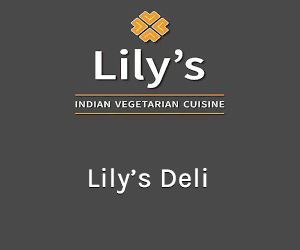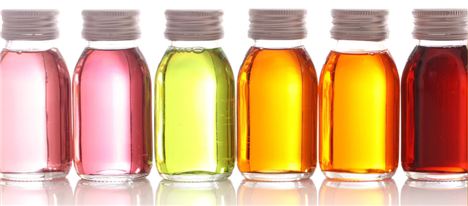WHAT are you eating?
No, what are you really eating?
Nutritionist Clare Jones has read all the labels for you. Here’s her A-Z of ingredients in food to avoid and the reasons why...
A - Aspartame or other artificial sweeteners. Aspartame breaks down in the body to methanol and formaldehyde and has been linked with a long list of symptoms including headaches, anxiety, asthma, aggression, memory loss, seizures, etc. Several artificial sweeteners have been linked with cancers and, despite their low calorie content, with weight gain.
B - BPA (or Bisphenol-A). Not a food ingredient as such but a compound used to soften plastics which is often used in the manufacture of food containers and so finds its way into foods. BPA belongs to a group of chemicals known as 'hormone-disruptors', which may have implications for a number of hormonal conditions such as PCOS and infertility as well as some cancers. Limit exposure by reducing the amount of foods and drinks you consume from plastic containers with BPA.
C - Corn syrup or Glucose-Fructose Syrup. More of an issue in the US, where it is widely used, this is appearing in more and more food products in this country, such as cereals, yoghurts, biscuits and desserts. It's made using an industrial process that uses acid or enzymes to treat corn starch, making it up to eight times sweeter than sugar. It has been associated with a wide range of health issues including obesity, heart disease, non-alcoholic fatty liver disease and diabetes. Keep well away!
D - Dioxins. Group of chemical compounds also referred to as 'persistent organic pollutants' or POPs, which are found in the food chain, mostly in the fat cells of animals. Health risks are linked to long-term exposure to them and may include increased risk of some cancers, as well as damage to the immune system and reproductive issues. To reduce exposure, limit meat and fish in the diet and increase fruit and vegetables, as in a Mediterranean-style diet.
E - Erythrosine (E127). Artificial bluish pink colouring, often used to colour cherries in tins and jars. Banned in some countries, its use has been linked to asthma, hyperactivity, hives, light sensitivity and some cancers.
F - Flavourings. Widely used in processed foods, they may be artificial or 'natural' flavourings. Often bear little resemblance to the food they are imitating, even those labelled as 'natural'. Foods that need flavour added are generally best avoided.
G - GMO or genetically modified organism. May also be labelled 'GM'. There is concern over the safety of genetically-modified ingredients on human health. Not only that, but many GM crops are 'herbicide-tolerant' allowing greater spraying, which may leave residues on foods.
H – Hydrogenated fats, or partially hydrogenated fats. These are derived from oils which are industrially processed to make them more solid, giving them a longer shelf-life. Widely used in processed foods and margarines, these fats are not handled well by the human body and have been linked to a wide range of health issues, including raised cholesterol, heart disease, diabetes and some cancers.
I - Instant porridge. Highly processed and often heavily sweetened. The real thing only takes five minutes to cook and is so much more nutritious.
J - Junk. It probably goes without saying but I needed a 'J'! The more processed a food is, the lower the likely nutrient content.
K - King sizes. And so-called 'sharing' packs. Who do they think they are kidding? Steer clear!
L - Long shelf life. Natural foods go 'off' relatively quickly; unnatural foods often seem to last forever (see 'hydrogenated fats', above). If something keeps for a year, its nutrient content is probably fairly low.
M - MSG or monosodium glutamate (E621). Used as a flavour enhancer but in sensitive people may cause severe reactions, including headaches, nausea, mood changes and a burning sensation in the upper body.
- Margarine. Often contains hydrogenated or trans-fats (see other entries). Unless you are vegan or sensitive to dairy products, always choose butter. If you must have margarine, choose an organic one, as organic produce does not contain hydrogenated or trans-fats.
N - Nitrates and Nitrites. Found in cured and processed meats, these compounds have been linked to a number of health issues including nausea, headaches and dizziness as well as increasing the risk of bowel cancer.
O - Oxidised polyethylene wax. Or indeed any other wax used as a protective coating on fruits, especially lemons and limes. Derived from petroleum, it's not what I want in my G&T! Choose organic or unwaxed fruit whenever possible.
P - Phosphoric acid. Added to fizzy drinks amongst other things and has been linked to tooth erosion and the loss of calcium from bones. There is increasing concern about the risk of low bone density in people who drink a lot of fizzy drinks.
Q - Quinoline yellow (E104). One of six artificial colourings which, along with sodium benzoate (E211) were found in a 2007 research study to increase hyperactive behaviour in children. The other colourings are Tartrazine (E102), Sunset Yellow (E110), Carmoisine (E122), Ponceau 4R (E124) and Allura Red (E129). Quinoline yellow has also been associated with asthma, hives and skin rashes and is banned in some countries.
R - Residues. Particularly of pesticides heavily used in the farming industry. Levels of these on our fruit and vegetables are unknown and undeclared but surveys show that they can be high, particularly in some produce, and the cumulative effects of combinations of different pesticides is unknown. See EWG's 'Dirty Dozen'. Choose organic whenever possible.
S - Sugar. Possibly one of the most processed ingredients in our food, sugar offers nothing but pure carbohydrate without any vitamins, minerals or fibre to aid its metabolism. Contributes to the huge rise in obesity and diabetes in the Western world. Also avoid anything described as a 'syrup' - this is just sugar in disguise.
T - Trans fats. See hydrogenated fats, above. To be avoided!
U – Undeclared ingredients. Bread made in supermarket bakeries do not have to list all the ingredients they contain, including additives and enzymes that may contribute to allergic reactions. Check out www.realbreadcampaign.org for more information and a list of 'real' bakeries.
V - Vegetable shortening. Used in processed foods, especially pastries and usually contains hydrogenated fats (see above).
W - White flour. Low in nutrients and quick to raise blood sugar levels, it's always better to go for a whole grain alternative.
X – Xanthan gum. Often used in gluten-free bread, there is some emerging evidence that it may contribute to indigestion and symptoms of irritable bowel syndrome (IBS). If you are gluten-sensitive, you may find that you do better on gluten-free breads without xanthan gum.
Y - Yeast extract. May be hiding MSG (see above).
Z - Zero-calorie drinks. Unless they're water! Otherwise likely to be full of artificial sweeteners, colours and other additives (see above).
The advice given here is not intended to replace medical advice. Always consult your GP if you are concerned about your health.
Clare Jones, BA(Hons), Dip ION, mBANT NTC & CNHC registered
Nutritional Therapy 07985 166606.
If you would like to make an appointment for a personal nutrition consultation with Clare, please contact her on the above number or visit Clare’s website: www.clarejones-nutrition.co.uk
Follow Clare on Twitter @ClareJonesNutri and Facebook www.facebook.com/ClareJonesNutritionalTherapy

















